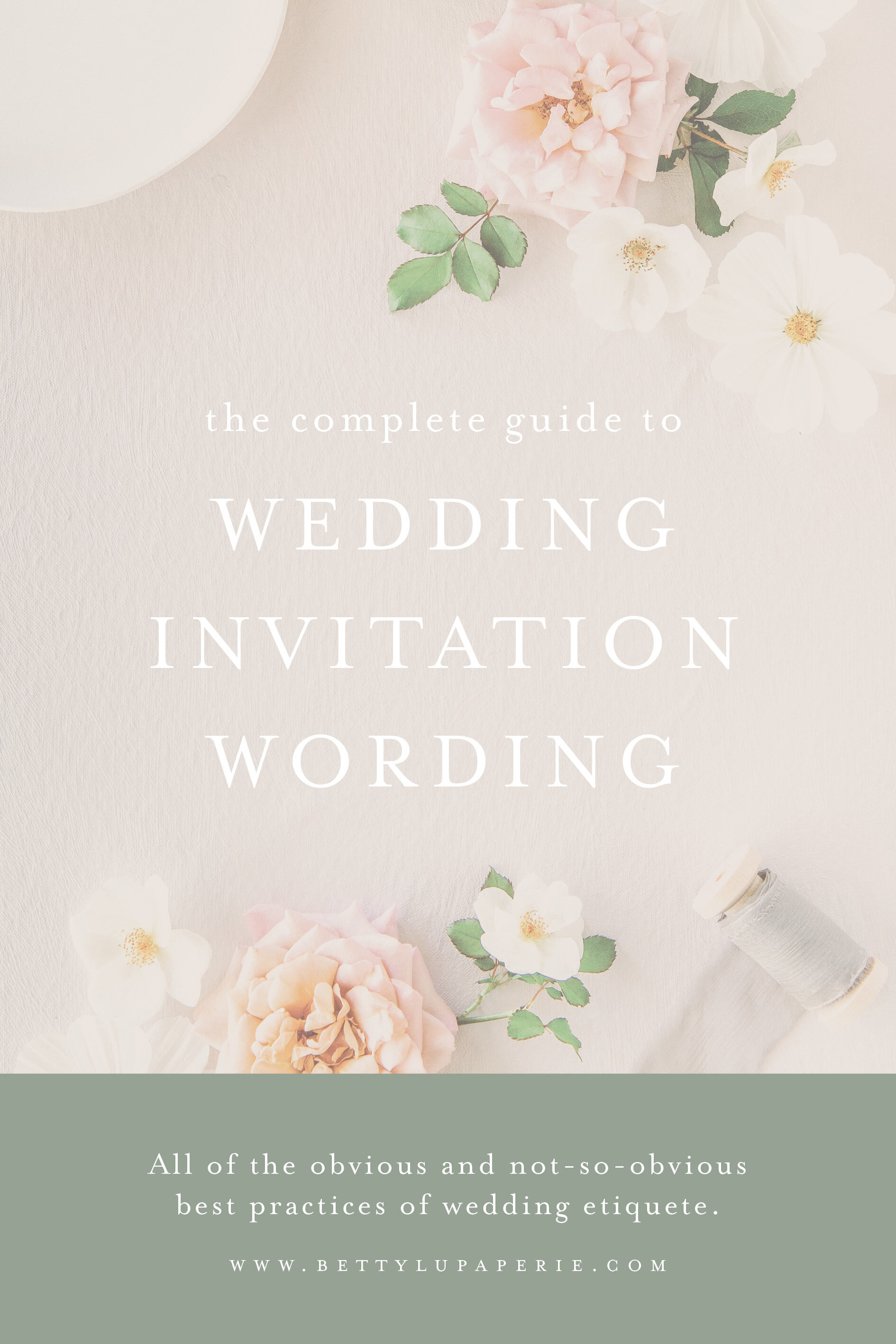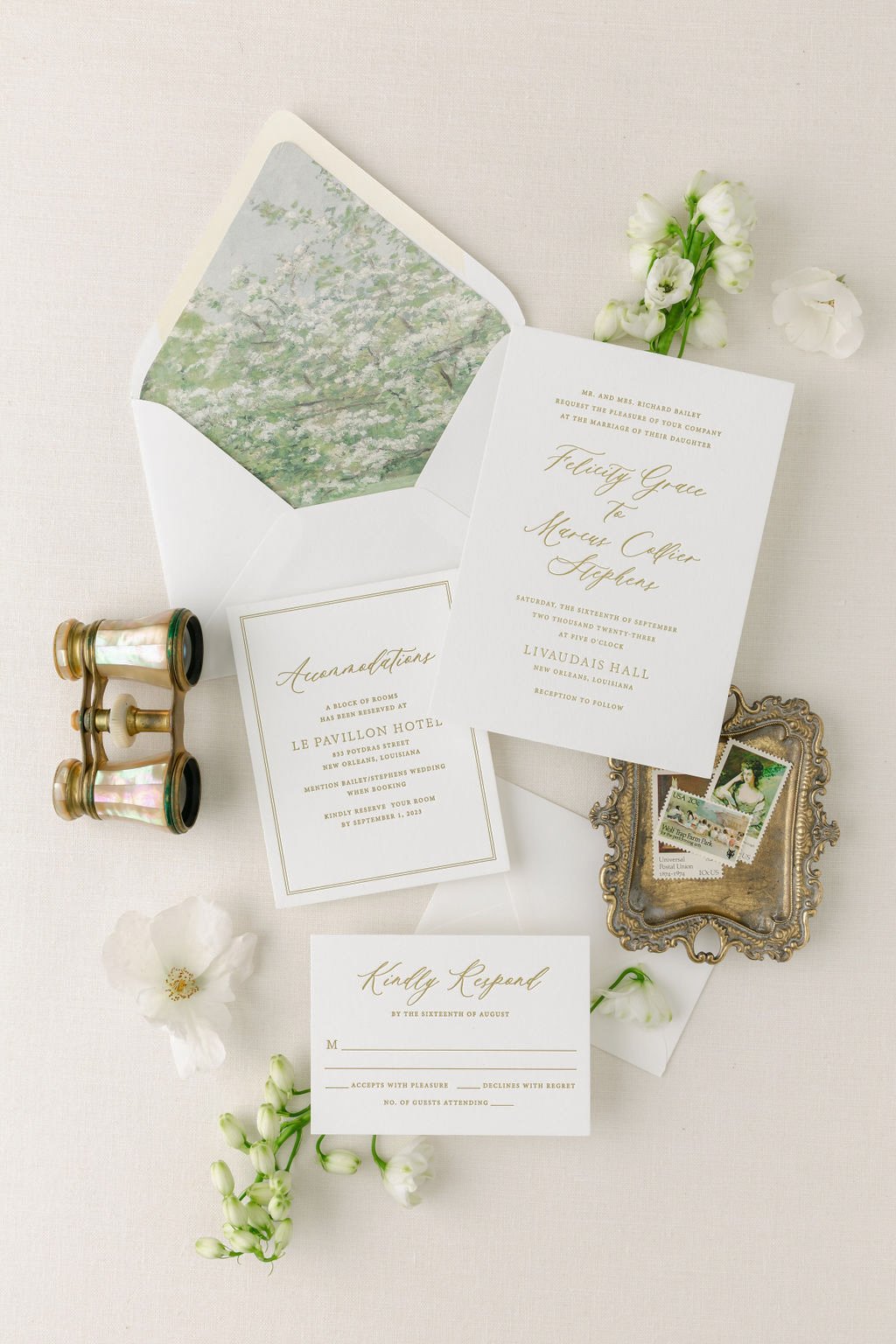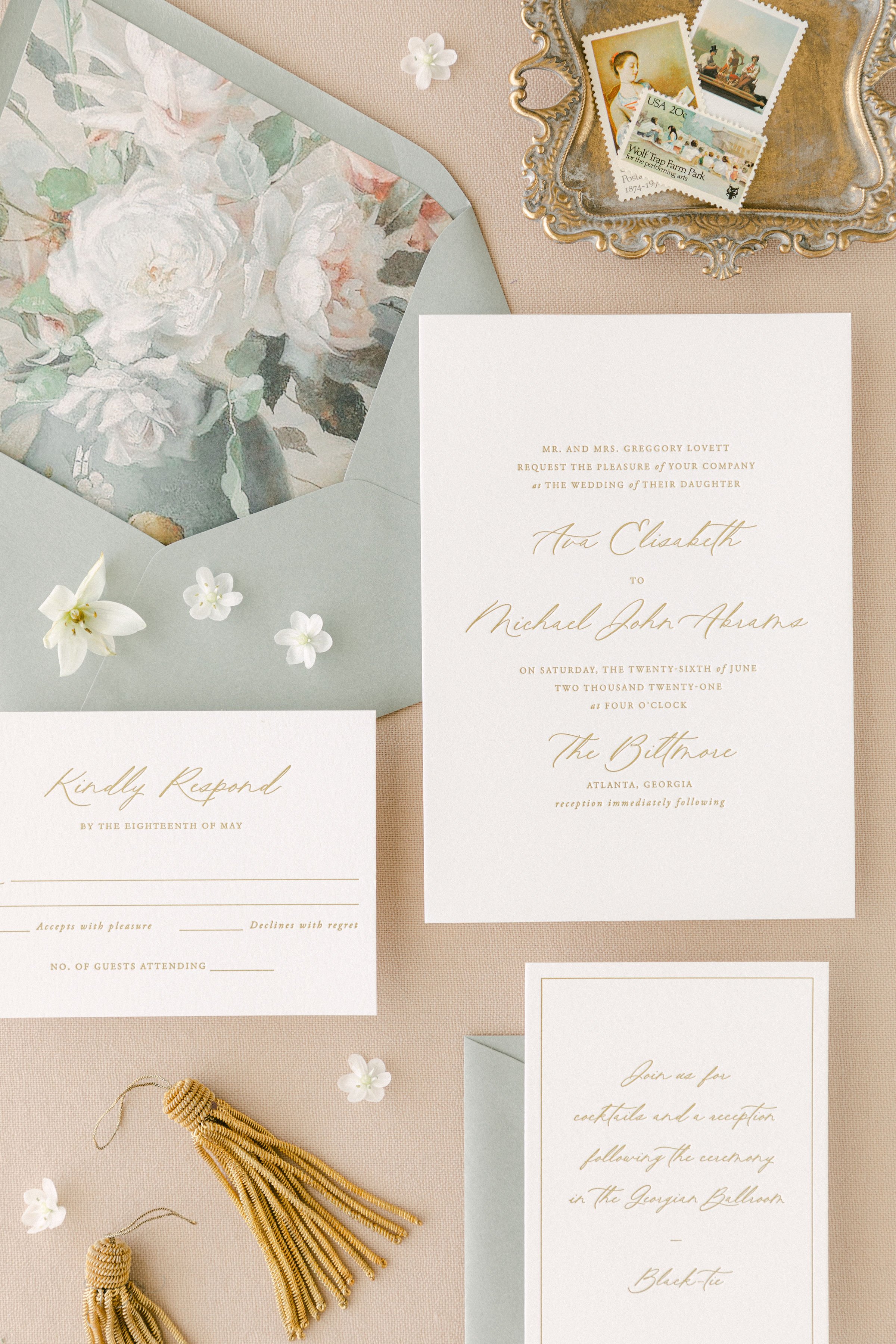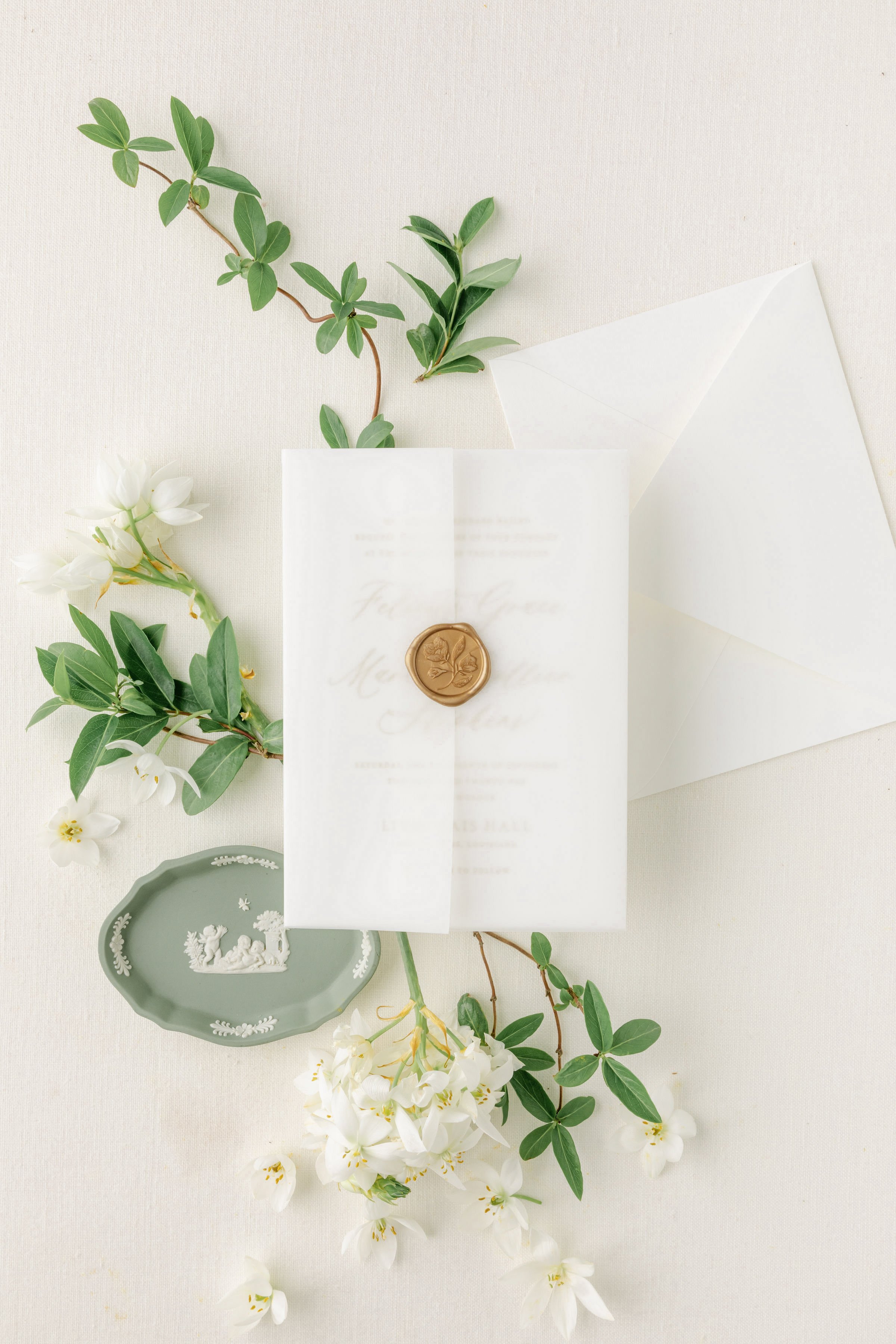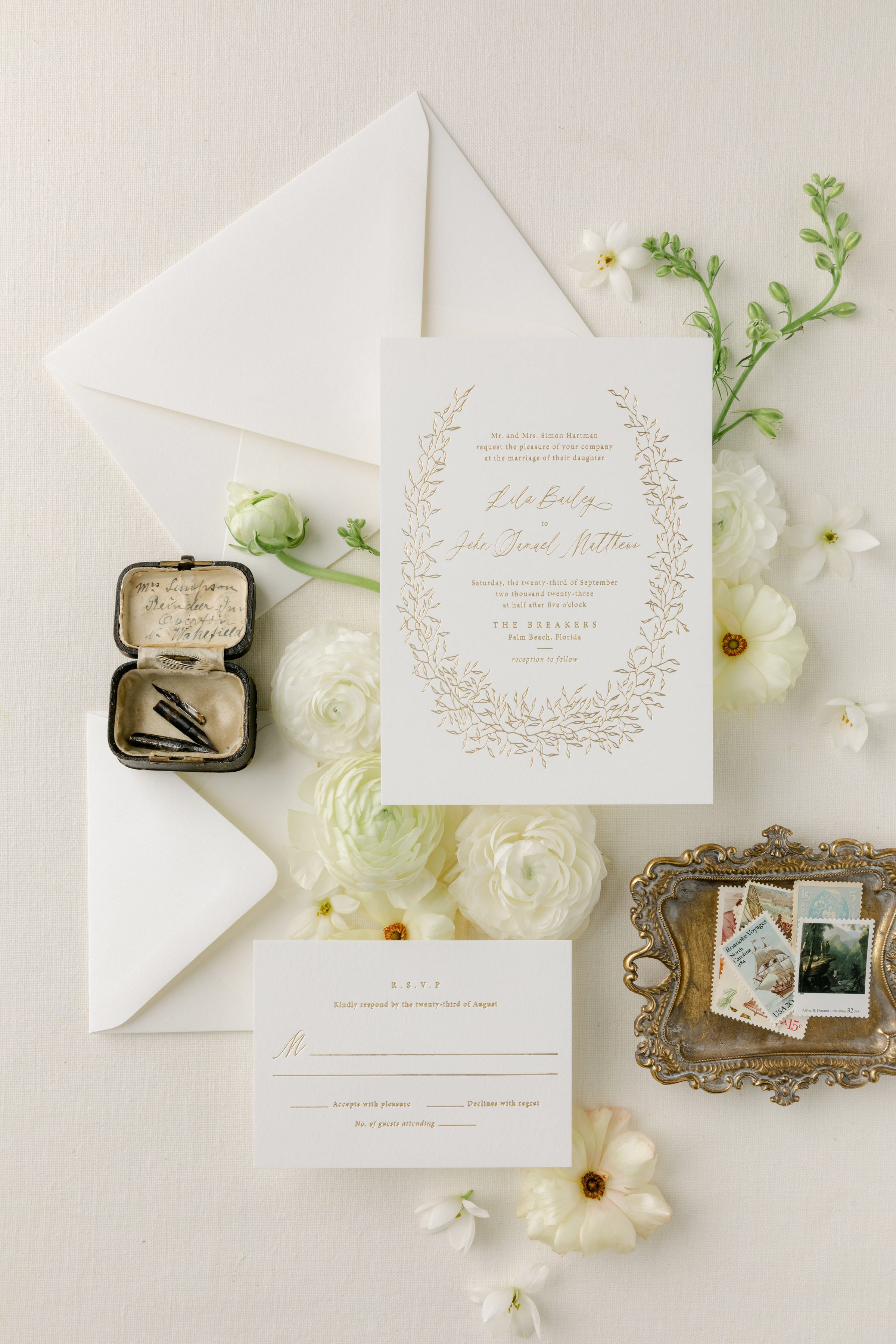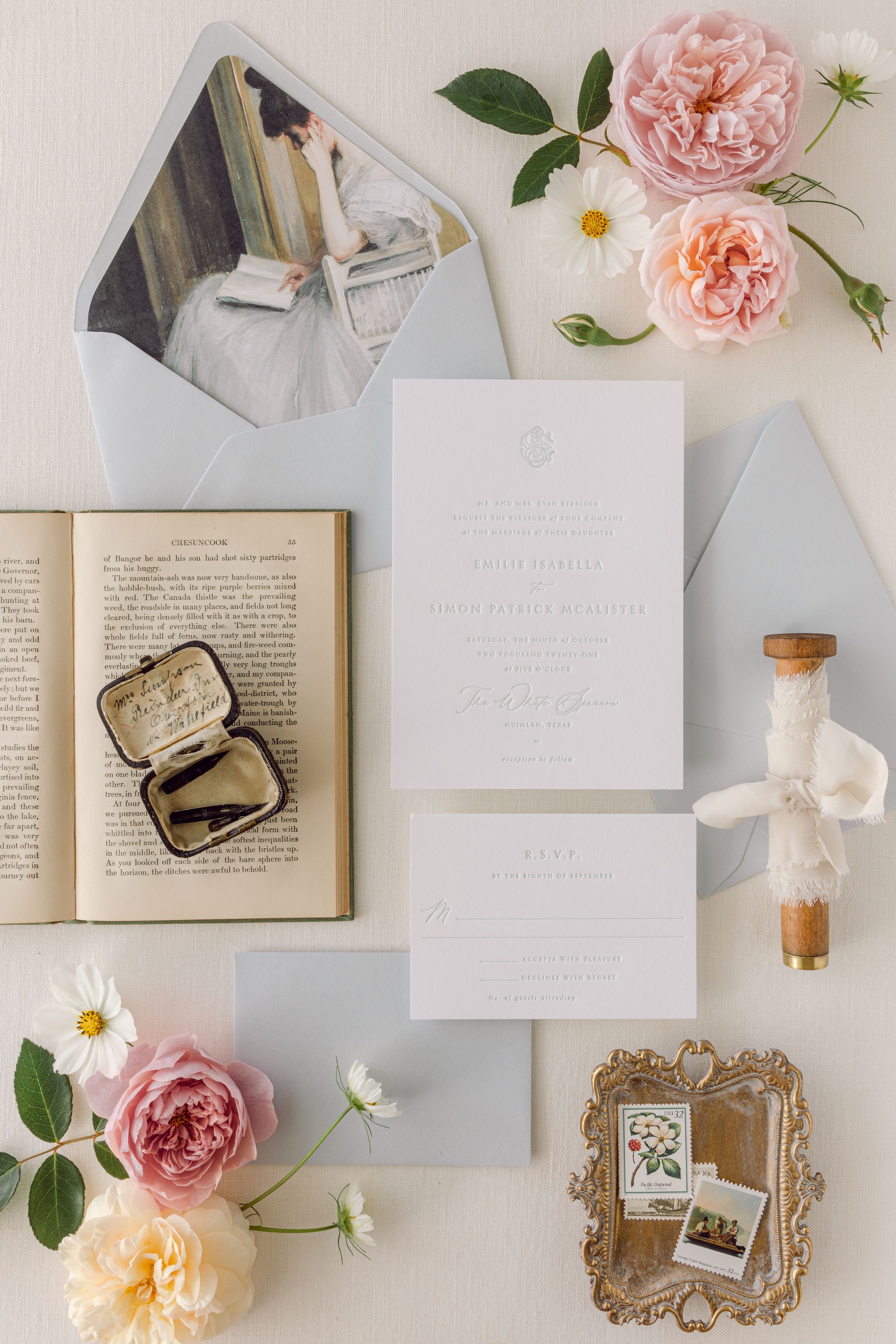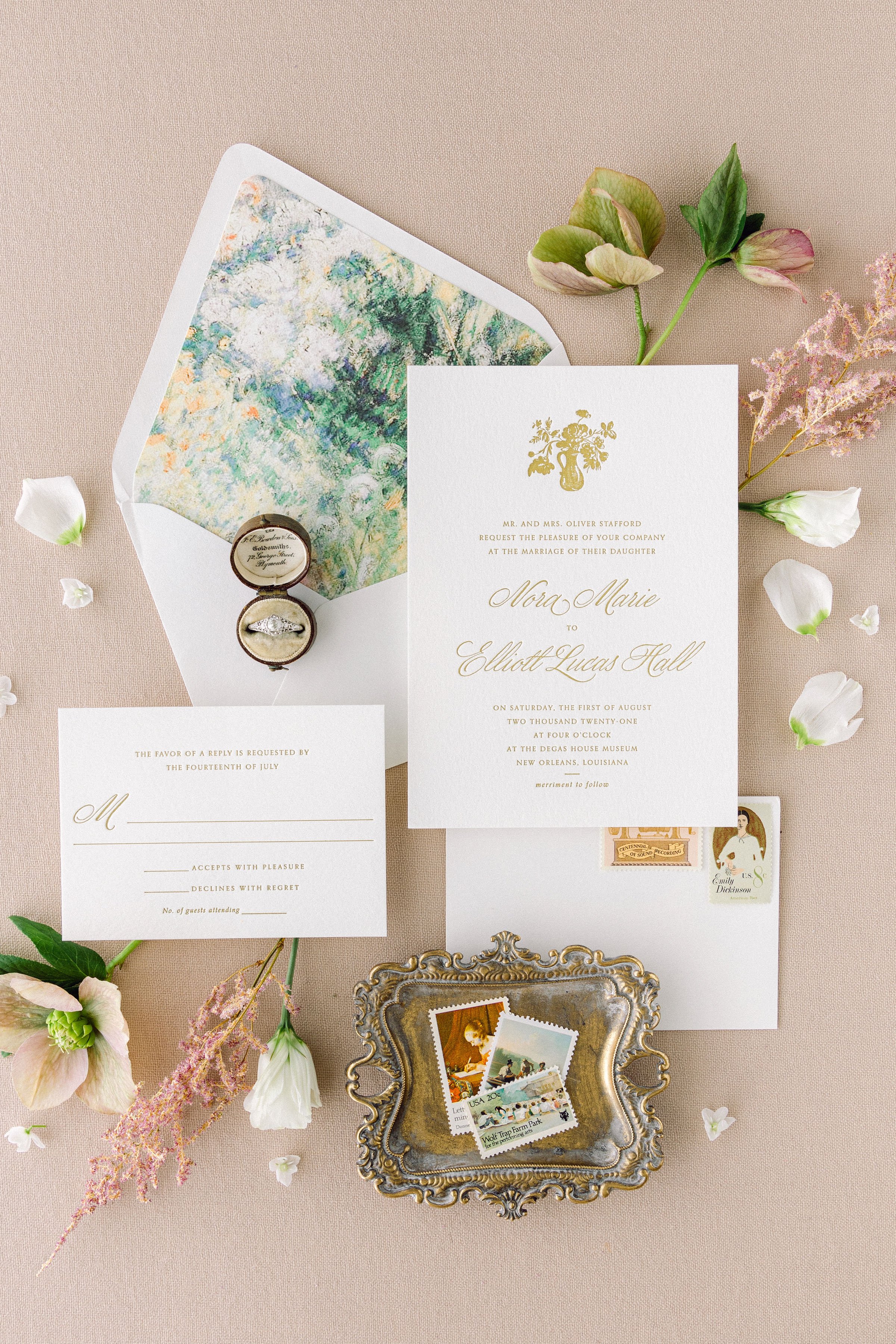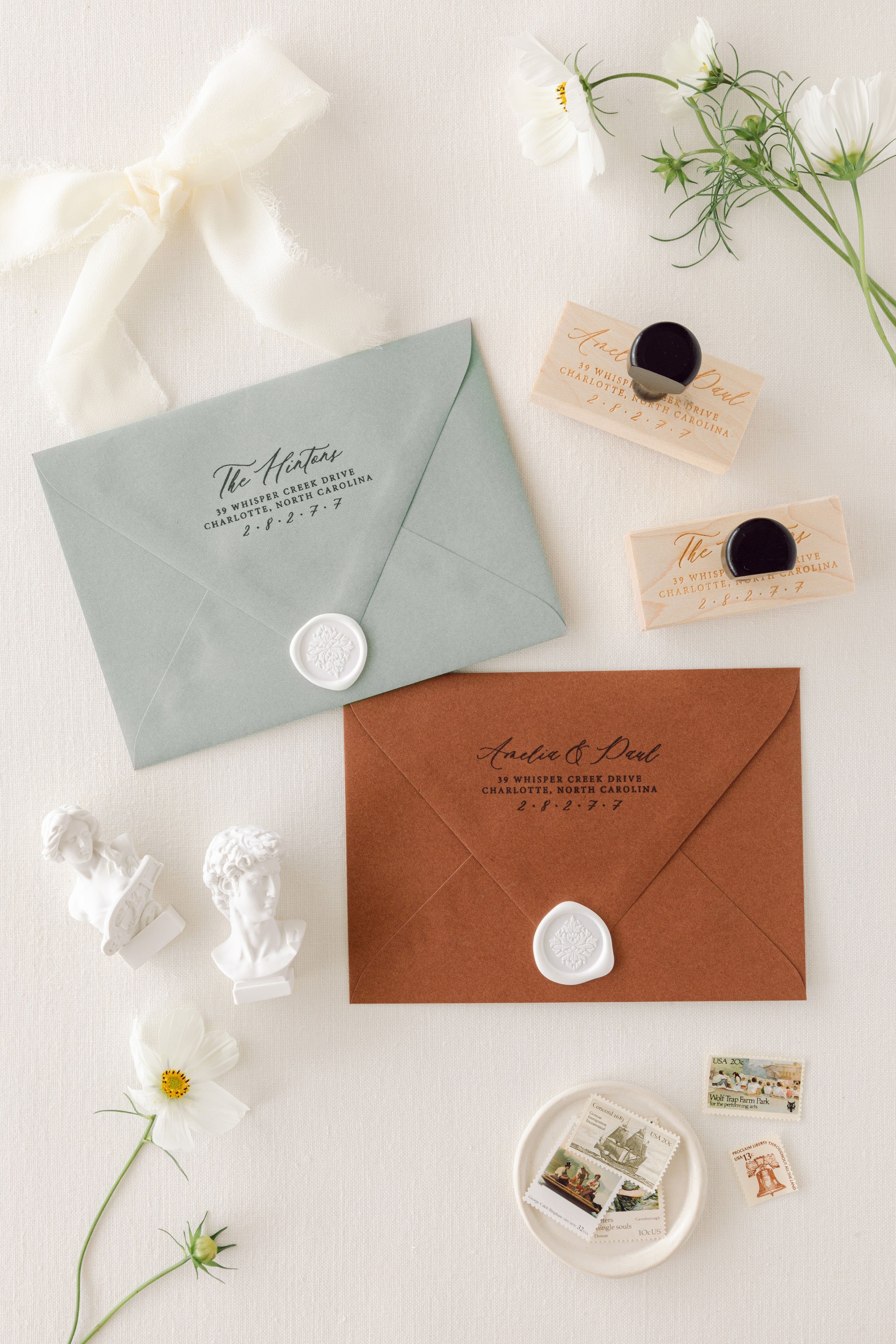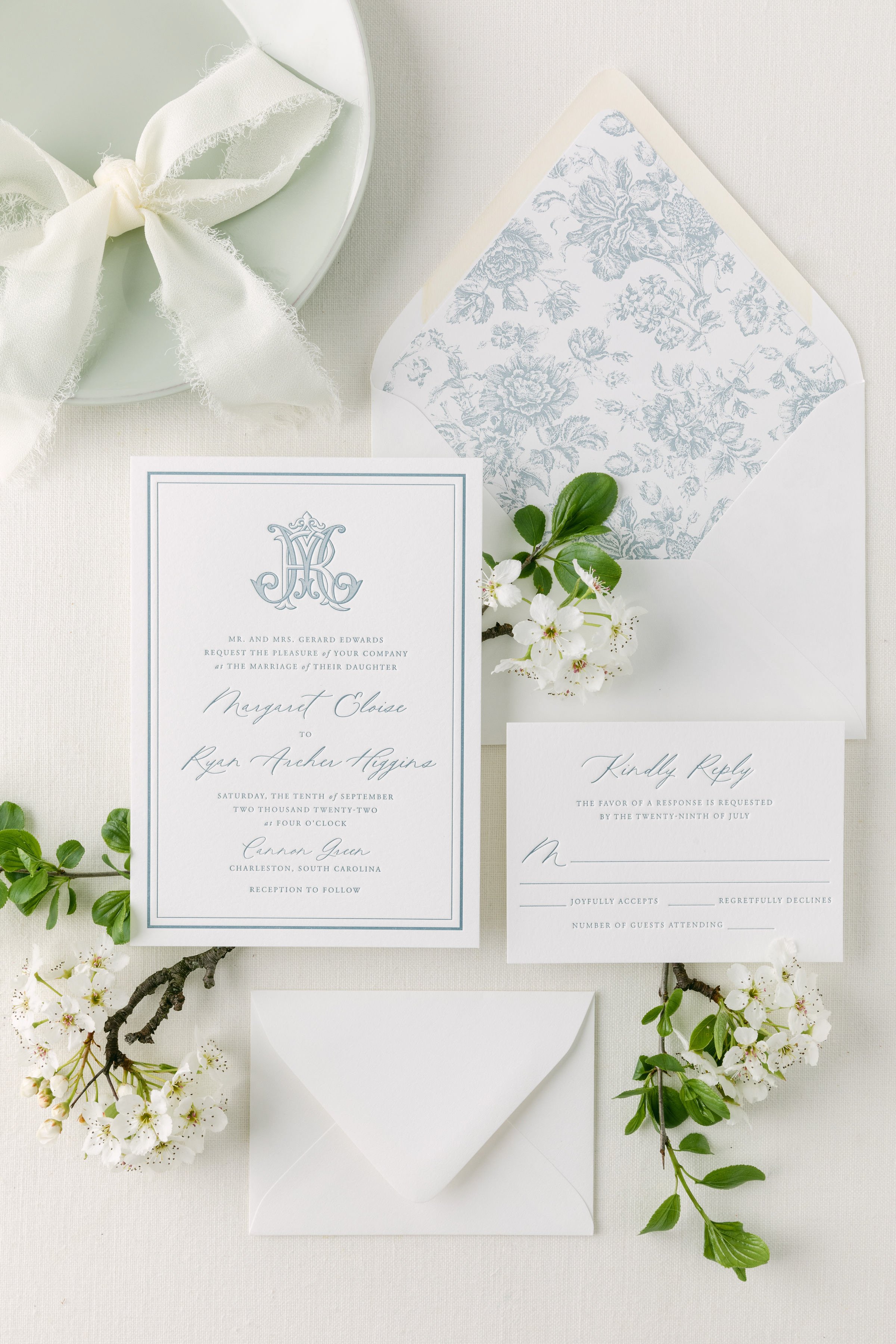Your Complete Guide to Wedding Invitation Wording
Wedding invitation wording can be overwhelming. Let's be honest, it's way more fun to pick your wedding flowers and linens than it is to determine wedding etiquette for stationery. But, it's one of those small tasks that can have a huge impact.
Your invitations and your invitation wording set the tone for your big day. Are British spellings like "honour" and "favour" used even though the couple is American? I read: super formal event that's definitely black tie. Even if you aren't familiar with wedding etiquette, you can make a few generalizations about what kind of wedding it will be from the invitation you receive. Even simple phrases like "Can't wait to celebrate with you!/Will toast from afar" on response cards can indicate a more casual, relaxed wedding environment.
And if I could let you in on a little confession... I had no clue how to word my own wedding invitations nearly five years ago, and since I DIYed my invites, they were riddled with mistakes. (I know, I know–but Pinterest was just catching on!) I didn't go to a professional for help, and although I do remembering Googling wedding etiquette, I guess I just didn't find the right resources. Thankfully I've learned a lot since being in the business for almost five years.
And now it's time to share my knowledge with you. Because I want you to have the perfect wedding, and the perfect wedding starts with the perfect wedding invitation.
You might be wondering, why do I even have to worry about invitation etiquette at all? My guess is that if you're reading this post, you probably care at least a little bit about your stationery. So I'll refer you to my point above: your invitation wording is a good indicator of what type of event guests can expect to attend. Invitations are becoming more creative and a lot less formal.
Generally speaking, the rules are set in place as a guideline for the sender and recipient. And yes, the rules are, of course, flexible in cases, especially where design is the most important aspect. But I like to think there is something commendable about using the proper format where necessary. Maybe it's because English was always my favorite subject or that I majored in Journalism, but to me, good grammar is good manners.
So let's get right to it. For traditional wedding invitations, here is a breakdown of formatting.
Wedding Host
The first line indicates the "host" of the wedding–i.e. who's paying for it. Typically, the bride's parents host the big day, but today many couples host their own wedding or host it along with their families.
Host: Bride's ParentsIf the bride's parents are hosting, list their names formally.
Mr. and Mrs. Stephen Smith
request the pleasure of your company
at the marriage of their daughter
Host: Both ParentsIf both parents are hosting, add a second line to include the groom's parents.
Mr. and Mrs. Stephen Smith
and
Dr. and Mrs. Edgar Jones
request the pleasure of your company
at the marriage of their children
Host: The Couple & Their Families
If the couple is hosting the wedding along with their families, you can list it as below.
Together with their families
Alexandria Jean Smith
and
Byron William Jones
request the pleasure of your company
at their wedding
Host: The Couple
If the couple is hosting their own wedding, format as below.
Alexandria Jean Smith
and
Byron William Jones
request the pleasure of your company
at their wedding
ORThe pleasure of your company
is requested at the wedding of
Alexandria Jean Smith
to
Byron William Jones
Request Line
The request line should correspond with the type of venue you're getting married in.
"honor of your presence"only used for ceremonies held inside a church or place of worship
"honour of your presence"the English spelling can be used for especially formal events
"pleasure of your company"used for weddings outside a place of worship
The Bride & Groom
Always list the bride first. If the bride's parents are hosting the event, use her first and middle name. Adding the bride's last name when her parents are already listed is considered redundant. Only add her last name if her parents are divorced or if the bride has been married before and does not use her maiden name.
If both families are hosting, refer to both the bride and groom by their full names–first, middle and last.
If the couple is hosting the event, you can list their full names or first and last names.
Event Date and Time
Spell out all words, including the day, month, year and time. There is no "and" between two thousand seventeen. For casual weddings, numerals are fine to use. Afternoon is from noon to half past four. Evening weddings begin at five o'clock or after.
Saturday, the second of June
Two thousand eighteen
at half after five o'clock in the evening
Location
Spell out the city and state. For formal wedding invitations, the street address of your event venue is omitted, unless if the wedding is held at the host's residence. Zip codes are never included–it is a visual distraction and generally unnecessary.
Reception
Formal wedding invitations omit this information on the main card, and instead list it on a separate enclosure card. Otherwise, if the ceremony and reception are held at the same venue, you can include "and afterward at the reception" or, more commonly, "reception immediately following", assuming there is room on the invitation.
Capitalization
Only proper nouns are capitalized. Do not capitalize the year, or even the first letter of the year as this is not a proper noun. It is common today to capitalize the first word in the reception line, though traditionally it is not. Exception: It is okay for all words to be capitalized on your invitation or for some lines to be capitalized to signify their significance.
related blog posts
